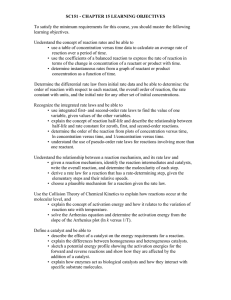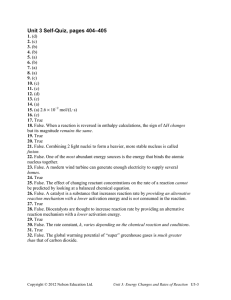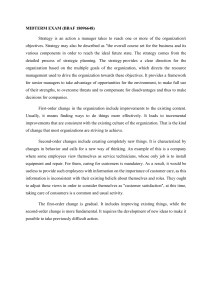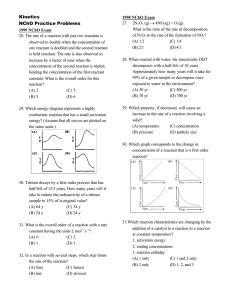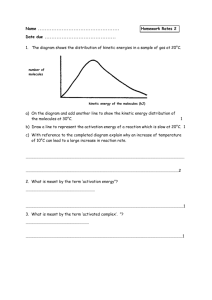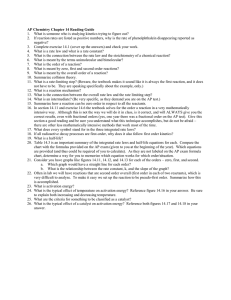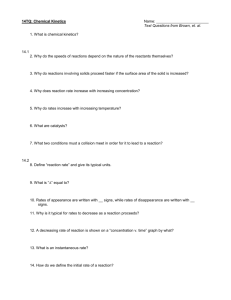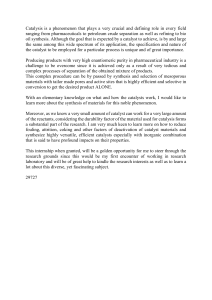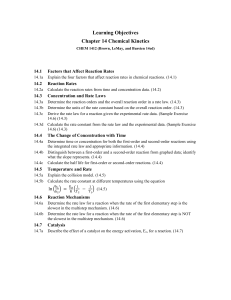CHAPTER 14 LEARNING OBJECTIVES learning objectives.
advertisement
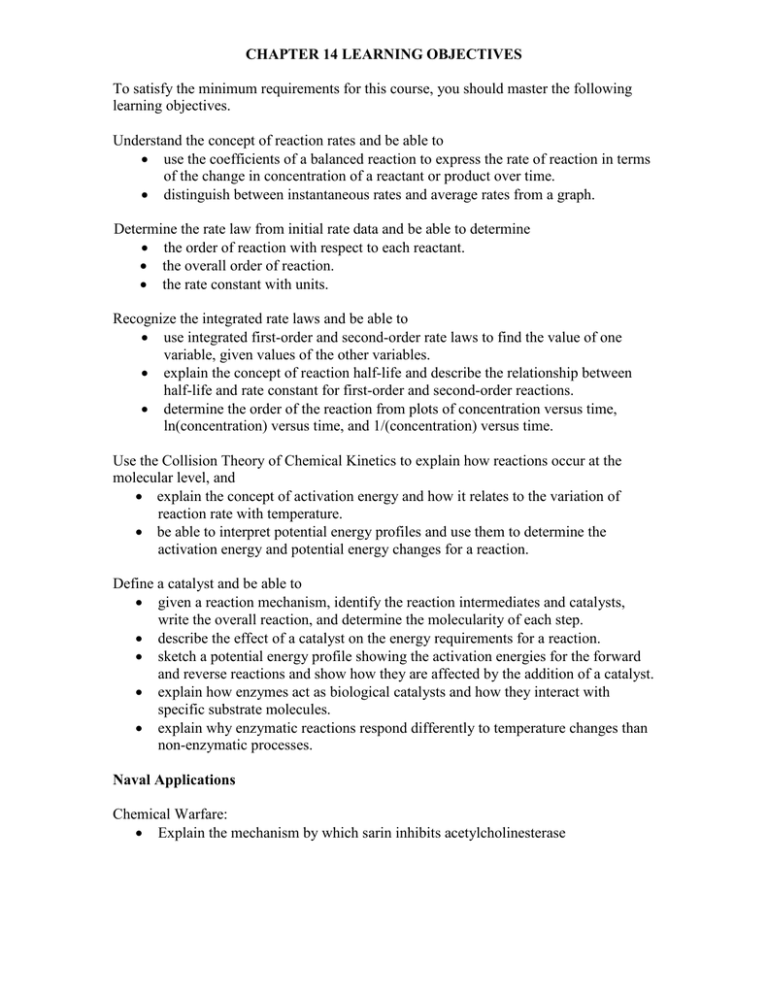
CHAPTER 14 LEARNING OBJECTIVES To satisfy the minimum requirements for this course, you should master the following learning objectives. Understand the concept of reaction rates and be able to • use the coefficients of a balanced reaction to express the rate of reaction in terms of the change in concentration of a reactant or product over time. • distinguish between instantaneous rates and average rates from a graph. Determine the rate law from initial rate data and be able to determine • the order of reaction with respect to each reactant. • the overall order of reaction. • the rate constant with units. Recognize the integrated rate laws and be able to • use integrated first-order and second-order rate laws to find the value of one variable, given values of the other variables. • explain the concept of reaction half-life and describe the relationship between half-life and rate constant for first-order and second-order reactions. • determine the order of the reaction from plots of concentration versus time, ln(concentration) versus time, and 1/(concentration) versus time. Use the Collision Theory of Chemical Kinetics to explain how reactions occur at the molecular level, and • explain the concept of activation energy and how it relates to the variation of reaction rate with temperature. • be able to interpret potential energy profiles and use them to determine the activation energy and potential energy changes for a reaction. Define a catalyst and be able to • given a reaction mechanism, identify the reaction intermediates and catalysts, write the overall reaction, and determine the molecularity of each step. • describe the effect of a catalyst on the energy requirements for a reaction. • sketch a potential energy profile showing the activation energies for the forward and reverse reactions and show how they are affected by the addition of a catalyst. • explain how enzymes act as biological catalysts and how they interact with specific substrate molecules. • explain why enzymatic reactions respond differently to temperature changes than non-enzymatic processes. Naval Applications Chemical Warfare: • Explain the mechanism by which sarin inhibits acetylcholinesterase
